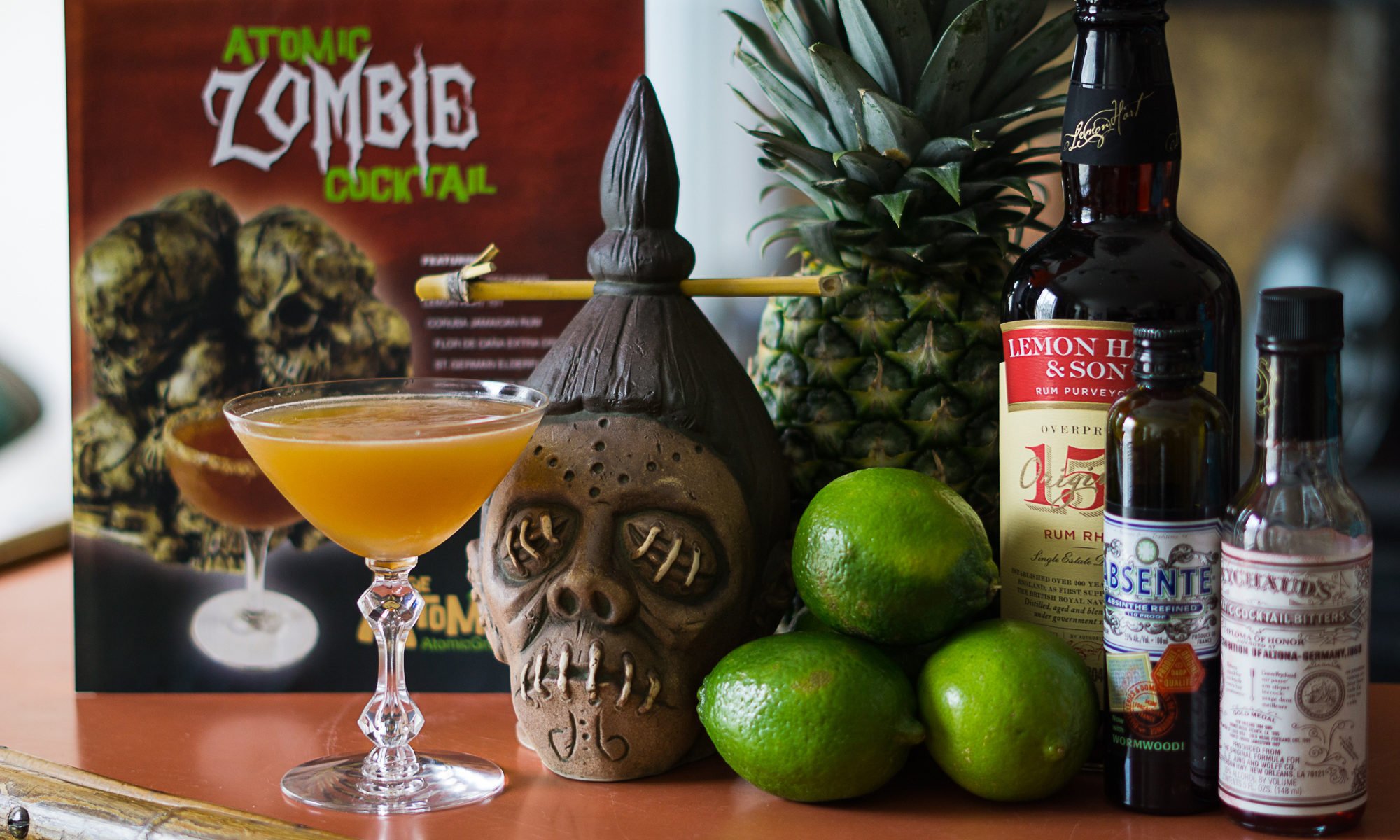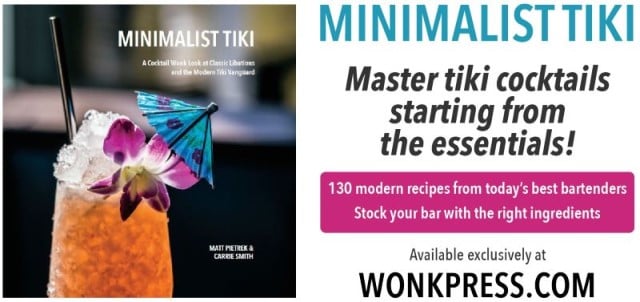Updated July 2014
See below: Our Floridita Daiquiri review | Official Mai-Kai recipe
Related: Lost Cocktails of The Mai-Kai: Short-lived daiquiri disappared when Cuba fell
The Derby Daiquiri: The Mai-Kai’s ‘$100,000 drink’ | Mai-Kai cocktail guide
The Floridita Daiquiri, the legendary cocktail born in Cuba and reportedly consumed by author Ernest Hemmingway in prodigious numbers, is one of history’s most debated rum drinks. One thing not open for debate, however: The Mai-Kai’s version has become a classic in its own right after more than 50 years on the Fort Lauderdale restaurant’s menu.

Stories about La Floridita Daiquiri, as it was known at Havana’s El Florida bar (later known as El Floridita), are varied and many. One thing’s for certain: It was created by legendary mixologist Constantino Ribalaigua Vert, who spent nearly 50 years at the bar until his death in 1952. He started as a bartender and later owned the place. According to our favorite bum, cocktail historian and author Jeff “Beachbum” Berry, Vert was known as “El Rey de los Coteleros” (“The Cocktail King”) and reportedly squeezed 80 million limes and poured 10 million daiquiris in his lifetime.
* Rum Connection: Watch bartender Alejandro Bolivar make a daiquiri at El Floridita
Vert, more commonly referred to as Constante, was a major influence on Trader Vic and other tropical drink pioneers of the era with his many creative variations of the daiquiri, which is believed to have been invented in the early 1900s in Cuba. By the 1930s, he had turned it into an art form. In this article, author and rum historian Wayne Curtis, theorizes about how Hemmingway inspired a drink called the Papa Doble, which morphed into the Hemingway Daiquiri (aka the Hemingway Special).

Most Papa Doble recipes include light rum, lime and grapefruit juice, plus maraschino liqueur. Some also contain sugar syrup, but Hemmingway notoriously tried to avoid sugar due to his diabetes. Beachbum Berry’s Grog Log includes a great basic recipe: Frappe 4 ounces light rum, 1/4 ounce maraschino liqueur, and the juice of two limes and 1/2 grapefruit in a blender full of crushed ice. Prepare this with authentic Havana Club rum, and you’ll understand why Hemmingway was so smitten. Note that he liked his daiquiris blended and frozen (or frappéd), even though most were shaken and poured in those days.
A definitive book on daiquiris, Cuban cocktail history, Constante and his influence on Trader Vic and Don the Beachcomber is undoubtedly Potions of the Caribbean: 500 Years of Tropical Drinks and the People Behind Them, Berry’s 2013 opus that won the Spirited Award for Best New Cocktail/Bartending Book at the annual Tales of the Cocktail event in New Orleans in July 2014. For the book, Berry unearthed 35 “lost” and never-before-published recipes, including many daiquiris and works of art by Constante. “His subject was the daiquiri, and his medium was ice,” Berry wrote. They were numbered, “like a series of late-period Rothko canvases.”

Berry also goes into great detail about Hemingway and his attraction to Constante’s La Florida Daiquiri Number 3 and Number 4, which were somewhat revolutionary in his use of the electric blender. The two drinks are very similar, with Number 3 containing a bit of grapefruit juice. Berry also weighs in on the myths of Hemingway actually creating these drinks. Rather, he surmises, the author persuaded Constante to alter his recipes to suit his tastes, “creating an acidy, boozy Frankenstein’s monster out of the elegant original” in the case of the Papa Doble. Hemingway was, after all, an alcoholic, Berry notes. And “alcoholics do not make good drinks. They make strong drinks.”
The Mai-Kai’s Floridita Daiquiri is much more faithful to Constante’s original than Hemingway’s. It includes grapefruit and is also blended, but it omits the maraschino liqueur in favor of sugar syrup and also offers the option of an aged rum. Both are great touches and make the drink accessible to both a general clientele and rum lovers at the same time. It first appeared on The Mai-Kai’s menu around 1958 and has remained ever since.
The official menu description
FLORIDITA DAIQUIRI
Ernest Hemingway’s favorite from the Floridita Bar in Old Havana, the famous grapefruit daiquiri.
Okole Maluna Society review and rating
Size: Medium
Potency: Mild
Flavor profile: Grapefruit, lime, gold rum.

Review: A great take on this classic, tart frozen daiquiri with smooth anejo rum.
Rating: 3 out of 5 stars (see how it ranks)
Ancestry: The Floridita Daiquiri, also known as La Florida Daiquiri, was created at Cuba’s El Florida bar during the 1930s. Its popularity skyrocketed when American author Ernest Hemingway became a frequent customer and touted his own variation of the frozen drink. The Mai-Kai’s version was not on the original 1956 menu, but appeared several years later after the Cuban Daiquiri was removed and the restaurant’s signature Derby Daiquiri was added.
Bilge: If the daiquiri is the Holy Grail of rum mixology, the Hemingway Daiquiri may be the Lost Ark. Click here for an in-depth investigation by RumDood.com’s Matt Robold on this confusing mystery. And be sure to pick up Potions of the Caribbean for more than 50 pages of rich history on the daiquiri and Constante, its master. One more bit of trivia: The Cuban bartender was more or less a teetotaler and rarely sampled many of his 150 specialty drinks.
Agree or disagree? Share your reviews and comments below!
OFFICIAL MAI-KAI RECIPE
Floridita Daiquiri
(From Cocktail.com)

* 1 1/2 ounces anejo rum
* 1 1/2 ounces white grapefruit juice
* 1/2 ounce fresh lime juice
* 1/2 ounce rich sugar syrup
Combine in a blender with 1 cup crushed ice and process until smooth. Serve in a stemmed goblet.
According to this recipe on Cocktail.com, it was submitted to the site in September 2010 by The Mai-Kai. We’re fairly certain it’s authentic. If not, it’s a very close replica. Check out the discussion on this Tiki Central thread for more.
Notes and tips for home mixologists
* The Cocktail.com version calls for a double that serves two. The version served in The Mai-Kai is closer in size to a single, but it’s perhaps a bit larger than the above recipe. Simply adjust based on your glassware, but keep the ratios the same.
* The choice of rum is the key to this cocktail. Feel free to experiment with different aged gold rums. It’s likely The Mai-Kai used Cuban rum in the early days, and this is highly recommended if you can get your hands on some Havana Club. We tried Bacardi 8 and were pleased with the results. As noted above, the menu offers the choice of anejo, so it may be possible to sample some of the other premium rums in this classic.
* Of course, fresh-squeezed juices and homemade sugar syrup (an intense 2:1 sugar/water radio, boiled and chilled) also are necessary to get the most out of this drink. You could also try a 2:1 honey mix instead of sugar for a slightly different flavor.
* The recipe on Cocktail.com also offers a tip on making a non-alcoholic version: Just substitute club soda for rum.
Hemmingway would have preferred his Floridita without the sugar (and most likely double the rum), but this is a more user-friendly version, and one that can become a showcase for the best aged gold rums.
Okole maluna!



